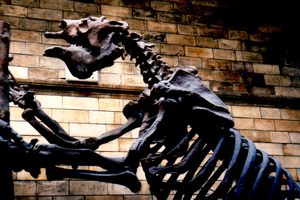About
Charles Darwin left a formidable legacy for scientists, as well as for unsuspecting clergy.
From 1842 until his death in 1882, Darwin and his cherished family lived in Downe, England, 15 miles or so south of London in Down House. The house and surrounding land was the family home, where the ever-curious naturalist observed wildlife, built himself a heated greenhouse, and wrote the groundbreaking work On the Origin of Species, wrestling with the philosophical implications of his discovery and suffering debilitating anxiety attacks.
Following the deaths of both Darwin and his wife Emma, the house was rented out until 1907 when it was converted into a girl's boarding school. Luckily for the curious amateur naturalist in us all, the house was eventually converted into a museum by English Heritage and the Natural History Museum. The home has been restored to Darwin's day, down to the angled mirror Charles kept in his study, which he used to keep an eye on whoever was coming up the driveway. The study room of the great man is particularly atmospheric and contains the desk upon which he wrote his masterpiece, along with his writing pens, scientific instruments, family portraits, and rather appropriately on the mantlepiece, the skull of a long dead primate species.
The greenhouse features the types of orchids and carnivorous plants that Darwin regularly examined—though he is best known for his work in the Galapagos Islands during the Beagle voyage, the bulk of his observations were on plants in his own greenhouse.
On the Down House grounds, visitors can stroll the Sandwalk through the woods where Darwin spent his days pondering his experiments and their results. Many of his manuscripts are also digitally on display.
(An under-reported fact: Darwin proved that seeds did move between continents before the advent of transatlantic voyages, via the guano of migrating birds.)
Related Tags
Community Contributors
Added By
Published
February 11, 2013
























